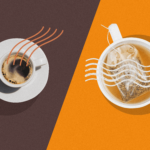You’ve likely heard the expression, “smiling is contagious,” and instantly smiled back when someone flashed a grin at you. Or maybe the phrase, “misery loves company,” and watched as someone else’s sour disposition affected an entire group of people. Or perhaps you’ve noticed that if someone you care about is hurting, you feel pain right along with them.
When you experience any of these phenomena, you’re experiencing emotional contagion.
“Emotional contagion is a way of describing how emotions or behaviors can spread between individuals and/or groups,” explains Jillian Amodio, LMSW. “Humans are social creatures, and we react and respond to the stimuli in the world around us. It should come as no surprise that because we are social beings, our emotions and behaviors can be influenced by those around us,” she adds.
At a Glance
Just observing how someone else shows their feelings doesn’t necessarily mean you will react in the same way. Still, emotional contagion makes it more likely and it can be a positive or a negative thing depending on the emotion you’re around. If you are easily affected by the people around you, there are ways to monitor emotional contagion with empathy and tools of self-regulation.
What Triggers Emotional Contagion?
Emotional contagion occurs when one person responds to the stimuli they feel when seeing another person’s emotions. Early studies found that emotional contagion occurred unconsciously, as a copied behavior based on what someone was observing. But there’s more to it than that. Several psychological factors also have an effect on your emotional response.
Jillian Amodio, LMSW
Emotional contagion is a way of describing how emotions or behaviors can spread between individuals and/or groups…Humans are social creatures, and we react and respond to the stimuli in the world around us.
“A variety of factors can influence or trigger emotional contagion. These can include verbal communication and non-verbal communication such as facial expressions and body language. Other environmental factors such as music, aromas, and atmosphere can have an impact as well,” Amodio explains.
Think about a room full of people watching a stand-up comedian. The funny story, and the performer’s actions, cause the contagious emotional response of joy, leading to laughter. As for environmental factors, a room where everything is in order can elicit feelings of peace, calm, and comfort. And that emotion is contagious to everyone who enters.
Advertisers, filmmakers, restauranteurs, retail salespeople, and scores of others rely on emotional contagion to convince you to buy something or evoke a feeling within you.
Negative Emotions Are Easier to Latch Onto
But just as positive emotions can be shared, so can negative feelings. You’re more likely to copy emotions of anger, frustration, or depression when your inhibitions are low.
“Primary things like poor sleep, not having eaten that day, [and] preexisting stress or overwhelm are going to make someone more vulnerable to emotional contagion. Because on a fundamental level, you are already worn thin and more easily swept up in an external emotional current.,” notes Peggy Loo, PhD, licensed psychologist and founding director of Manhattan Therapy Collective.
Whether consciously or not, if you notice your own mood changes, you mirror someone else’s, or you adopt the emotions or feelings of a group, you’re experiencing emotional contagion.
Emotional Contagion Is Linked to Our Neurons
Research shows that there could also be a neurological reason for emulating emotions called the mirror neuron system. Basically, certain neurons in the brain become active when a human observes another human doing something.
The person who is observing then mirrors what they see. With emotions, that means if you see another person crying, laughing, sulking, or smiling, you “mirror” what they do. And their emotions become contagious. Learning to mirror the emotions of our caretakers is actually a developmental milestone for infants, which can help explain why the habit persists.
Stages of Emotional Contagion and Its Impact
Although emotional contagion seems to happen before you even know it, experts say it actually takes place in stages.
“First, there’s mimicry—you smile, and my face just smiles with you. Then, there’s feedback—hey, look I’m smiling, and this tells me I’m probably pretty happy right now. And, finally, there’s contagion— now that I’m smiling, I’ll just go ahead and smile at the next person that passes by me,” notes professional counselor Carl Nassar, PhD.
Smiling and laughter, of course, are positive ways to share emotions. Not surprisingly, when you smile, mirroring someone else’s emotions, you also feel happier and less stressed.
“We have seen the effects of widespread emotional contagion influence groups and social behaviors in positive ways, such as a smile that keeps going, the connection and excitement we feel at a concert, the feeling of support and community spread at events like memorials and vigils, [and] the joy and excitement of a party,” states Amodio.
Negative contagious feelings have a detrimental effect.
“When it’s negative, emotion contagion can lead to burnout and a disoriented sense of self. As you take on the emotions of others or the environment around you, it can be hard to remain anchored and clear in your own experience or perspective in the moment,” says Dr. Loo.
When that happens on a larger scale or in a group, emotional contagion can lead to a mob-group mentality, spreading violence. It can also foster an atmosphere of fear and widespread panic. The key in any situation is knowing what steps you can take to manage your own emotional contagion.
Strategies to Help Control Emotional Contagion
Most people would love to manage the negative and harness the positive aspects of emotional contagion. Good or bad, there are steps you can take to manage your reactions.
- Figure out what actions, verbal and nonverbal, that are making you respond. Do you like the way they make you feel? If not, you are now aware of what to look out for.
- Stop for a moment and process what’s going on. Then take a deep breath. “Now that you’ve given yourself a moment, let’s use your body to your advantage. Breathing deeply is highly regulating. When you do it, your body tells your mind that everything is going to be okay. And your body and your mind start to center together,” says Dr. Nassar.
- Practice being empathetic to others. Working from a place of compassion may allow you to remain clear and detached, as opposed to absorbing someone else’s emotions. “Empathy allows us to connect with others and share their emotions in a way that provides support. When we begin to take on the weight of other people’s emotions as our own, or no longer recognize the emotions as ‘theirs’ that’s when the line has been crossed,” Amodio notes.
- Create an environment that brings out the best in you. That includes being in the company of people who put you at ease and make you comfortable.
- Work on using coping methods that work for you. “Identify and utilize coping strategies such as deep breathing, visualization, and cognitive restructuring when in uncomfortable situations,” Amodio advises.
Life is filled with moments of emotional contagion. The key is knowing how to navigate them and make them work for you.










